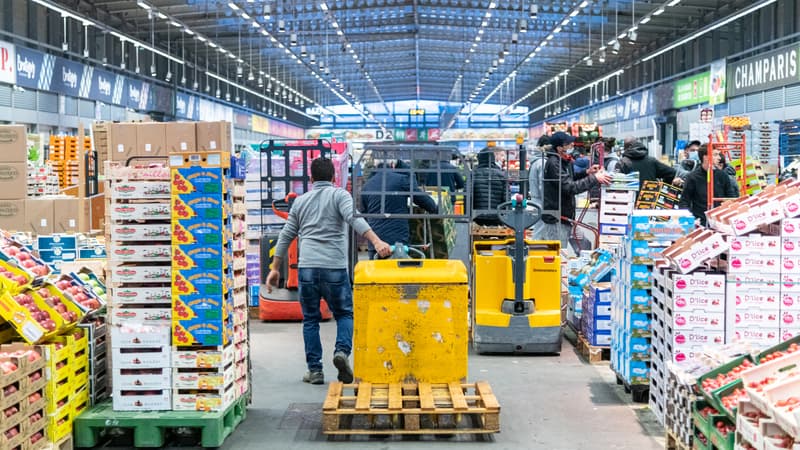In the Rungis market, south of Paris, it is effervescent from the early hours of the morning. From fish to meat, including flowers, fruit and vegetables, 2.8 million tons of fresh produce pass through the famous Ile-de-France wholesale market each year to feed 18 million consumers. There are more than 700 wholesalers working in the Rungis pavilions, sometimes a headache for professionals who have to stock up on food, forced to juggle between orders and phone calls.
This is the commitment of the Rungismarket website: to digitize this gigantic market to facilitate the supply to restaurants, caterers, merchants and other groceries. In 2018, a first attempt with the same name was a failure. The platform has been back in operation since February: it allows professionals to obtain supplies from wholesalers by making a single order. “The advantage is having a single delivery, a single invoice and a single interlocutor in the event of a problem,” says Pierre Lévy, founder of Califrais.
Artificial intelligence
Incubated in Rungis itself, Califrais won the tender launched in 2021 by Semmaris, the parastatal entity in charge of managing the wholesale market, to give the platform a second chance. The startup now manages the operation of the Rungismarket website, partnered with fresh produce carrier Stef and customer relationship outsourcing specialist Webhelp – the three companies had teamed up to answer the call for bids. “It is our technology and our logistics” behind Rungismarket, explains Pierre Lévy.
A layer of artificial intelligence has been added to the platform to manage the vast amount of data and provide the most up-to-date information possible. In Rungis, prices and supplies of these perishable foods can fluctuate from day to day depending on supply and demand. All the more complicated since a large amount of information must be taken into account for fresh products (maturity, size, origin, labels), which are not always the same depending on the product category, and very short expiration dates (DLC).
15,000 deliveries
Once the order is placed by the client, before midnight, it is sent to the wholesalers. The latter prepare the merchandise and then send it to the Califrais warehouse where they are assembled on a single pallet per customer. To carry out logistics, wholesalers have been trained in the use of the digital tool “so that they are as autonomous as possible”, explains Pierre Lévy. Then go to Stef’s warehouse, where the pallets are stored on the trucks. Drivers start at 5:30 am and arrive at 6 am within Paris.
Some 15,000 deliveries have already been made since the launch of the platform. To encourage market wholesalers to join their platform, their managers play on the additional sales channel argument and are conciliatory, sometimes preparing the orders themselves. Rungismarket currently brings together some sixty companies and 10,000 references: the goal is to increase to 200 wholesalers by the end of 2024, that is, approximately 30% of those installed in Rungis. “We want to multiply by ten the number of products sold” at this time, anticipates Pierre Lévy.
Source: BFM TV


